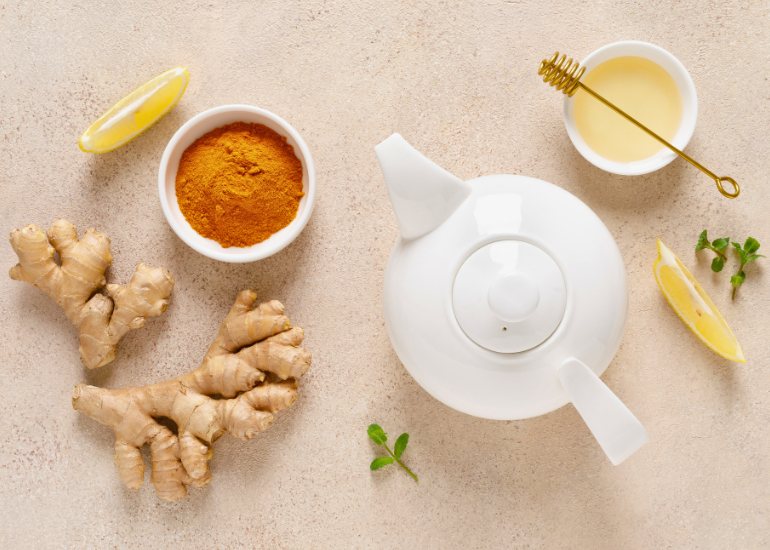When it comes to diabetes management, there are many tools at your disposal to keep blood sugars in range. Medications and innovations in technology are crucial parts of managing this condition, but other measures like drinking turmeric tea can be beneficial as well.
What is turmeric?
In the world of supplements, turmeric has gained popularity over the last few years. It is a plant in the ginger family that is native to southeast Asia. One of its bioactive compounds is curcumin; the effects of turmeric are actually those of curcumin and other similar elements. Turmeric’s rhizome, or underground stem, is used in cooking and as a traditional medicine.
This plant boasts many health benefits and has been used in Indian medicine to treat ailments related to skin, the upper respiratory tract, joints and the digestive system. It’s been used in Eastern Asian medicine as well. Turmeric is currently used as a dietary supplement for conditions like arthritis, digestive issues, respiratory ailments, allergies and more. Its anti inflammatory property benefits heart health as well.
How does turmeric impact diabetes and other health conditions?
Diabetes is a rapidly growing health condition, with type 2 being the most prominent form of the disease. Chronic high blood sugar is associated with inflammation and oxidative stress. However, circumin has antioxidant and anti-inflammatory properties, which could benefit people with diabetes.
A review of several studies showed that circumin improved fasting blood glucose, estimated average glucose and HbA1c, while another study’s participants had decreased fasting plasma glucose and insulin levels.
Keep in mind that turmeric shouldn’t be the sole treatment method for diabetes. Type 1, which is caused by the immune system attacking the insulin-producing beta cells in the pancreas, requires a robust treatment plan. This includes taking insulin, counting the amount of carbohydrates in the food you eat to determine insulin doses, checking your blood sugar regularly, eating a variety of nutritious foods and exercising.
Type 2 diabetes is characterized by the pancreas not making enough insulin and cells’ poor response to insulin and glucose, leading to high blood sugar. Treatment is similar to that of type 1, except people don’t always need to take insulin.
Circumin may also benefit people suffering from arthritis. A review of clinical trials focusing on osteoarthritis found that circumin had an equal or better effect on pain, function, inflammatory markers, oxidative stress and cartilage degradation than non-steroidal anti-inflammatory drugs (NSAIDs).
Metabolic syndrome, which is a metabolic disorder associated with central obesity, abnormal amount of lipids in the blood (such as cholesterol levels), high blood glucose, high blood pressure and insulin resistance, may be positively impacted by circumin as well. Research has shown that circumin helps stimulate insulin secretion while decreasing the amount of fat cells in the body.
Ways to consume turmeric
Circumin is “Generally Recognized as Safe” (GRAS) by the US Food and Drug Administration (FDA) at doses between 4000 and 8000 mg per day.
As a fat-soluble compound, circumin is best absorbed with a fat source such as milk, oil, nuts, eggs or yogurt.
There are several ways to consume this spice, especially in the form of powdered turmeric. You can add it to eggs, roasted veggies, rice or a smoothie.
Green tea is another great way to consume turmeric. A turmeric latte, also known as Golden Milk, is another popular drink made with coconut milk and honey. However, you can sub the coconut milk with almond milk or any other type you prefer.
Common ingredients to add to your turmeric drink include cinnamon, honey, maple syrup, lemon juice (for vitamin C) and grated ginger.
If you are looking for an easy way to consume turmeric, consider trying Navitas Organics’ turmeric products today!
AUTHOR BIO
Kourtney Johnson, RD, LD, is a weight-inclusive dietitian with experience counseling patients on intuitive eating to break the diet cycle, maintain eating disorder recovery, and build a healthy relationship with food and their bodies. She also writes nutrition content and is passionate about sharing accurate, evidence-based information with consumers.
)
